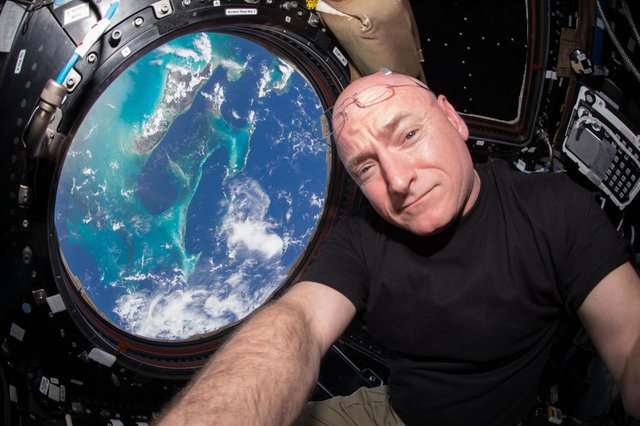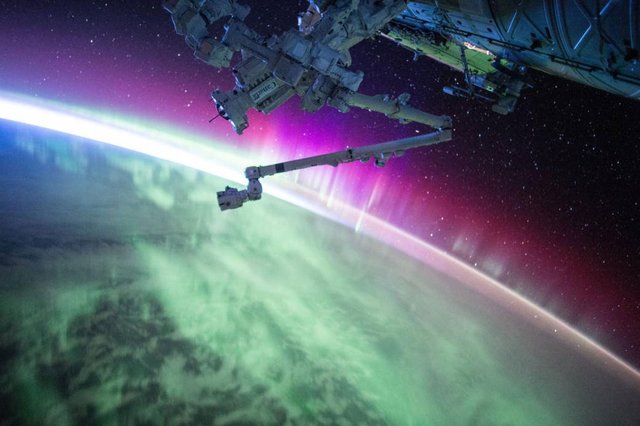Scott Kelly Spent a Year in Space- Find out how feel that was

Astronaut Scott Kelly snapped a selfie with a view of Earth from the International Space Station. Kelly holds the record for the longest single spaceflight by a NASA astronaut.
What does it feel like to blast off from Earth in a rocket, knowing that you will not see your family, feel the wind on your face, or taste fresh-cooked food for a whole year?
Scott Kelly, the first NASA astronaut to spend close to a year on the International Space Station (ISS), describes how strange it was in Endurance, his new book. But he emphasizes the scientific benefits of his marathon space voyage. By comparing Kelly with his earthbound twin brother Mark, scientists were able to gather priceless information about the psychological and physiological effects of long-term space travel—information that will be crucial if we ever make the journey to Mars. [Read an excerpt from Kelly’s memoir of spending a year in space.]
There’s an amazing moment in your book, Scott, when you lose your orientation in the dark during a spacewalk. Put us inside that moment and describe how it felt.
I was on my second spacewalk. It was long and tiring and toward the end of it, when we were heading back inside to the airlock, ground control asked me to do some other activity to check a valve. Even though I was tired, I let him know that I could do it. You don’t know what else could wind up going wrong so you’ve got to rise to the occasion.
I started heading to the work site on the other side of the truss, an area I wasn’t familiar with, and I got completely lost in space and disoriented, and turned upside down. It took me a while to figure out where I was. It’s not like you’re lost and you can’t find your way home. I never felt like I was in any kind of risk. But at the same time, it was not a great feeling.
Eventually the sun came up. [Laughs] Before that I was able to see some lights over my head which I thought was the sky, but it wasn’t. It was the Earth. When I saw them, I realized that I was flying over the Middle East. I could see the Arabian [Persian] Gulf, which is very distinctive from space, even at night.
You talk very prosaically about this. But for most of us the idea of being upside down, outside a spacecraft at night, sounds terrifying!
eah, but I’ve been doing this job for nearly 20 years. Even though I hadn’t done a whole lot of space walks before, I was familiar with living in this risky environment. If you took the average person, put them in a space suit and threw them outside the space station with no previous training or experience, that would be, like you said, terrifying.
One of the things you notice is that there are a lot of dings and, in some cases, holes going through hand rails and other metal structures, on the outside of the space station. The space station gets hit a lot! Fortunately, we have some good debris shields and nothing has ever penetrated the hull but there’s a lot of stuff flying around out there. And if one of those things hit you in the face or somewhere else on your suit, it would do some severe damage to you and your suit, which is filled with 100 percent oxygen.
The view of Earth from the outside is incredible. It makes you feel like you are experiencing the full majesty of planet Earth and it’s just incredible. Those images of sunrises and sunsets, the blue of the Earth and city lights at night, as seen through my visor, is something that will hopefully be ingrained upon my brain for the rest of my life.... (sort)

img credz: pixabay.com
Nice, you got a 51.0% @tard upgoat, thanks to @sagorahmed
Want a boost? Minnowbooster's got your back!
The @OriginalWorks BETA V2 bot has upvoted(0.5%) and checked this post!
Some similarity seems to be present here:
https://news.nationalgeographic.com/2017/10/scott-kelly-year-space-station-iss-endurance/
This is an early BETA version. If you cited this source, then ignore this message! Reply if you feel this is an error.
Nice one.
This post has received a 0.03 % upvote from @drotto thanks to: @banjo.